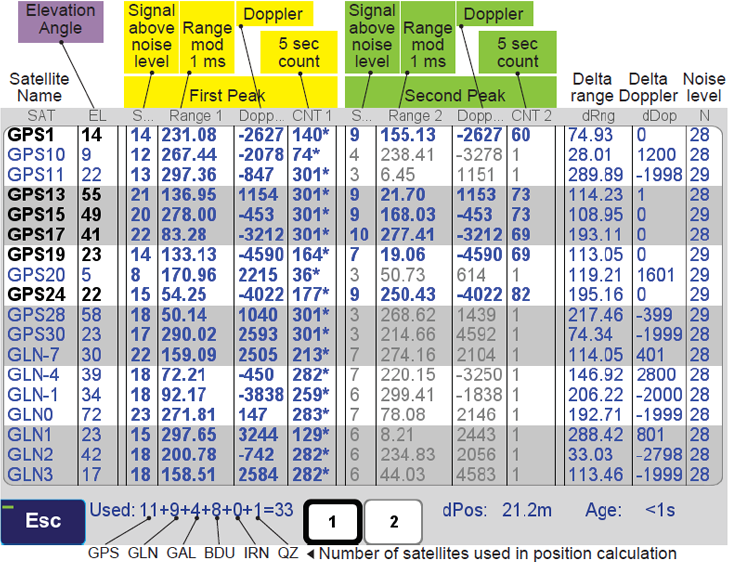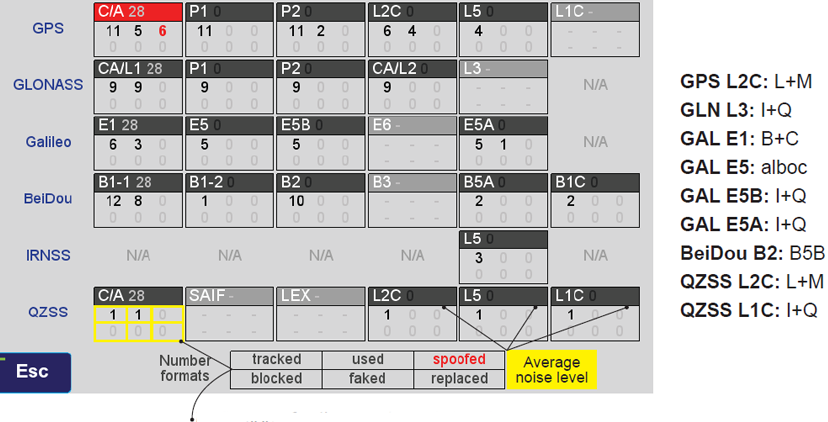

Spoofers are not only of the Black Sea type, as reported in
the press, kids are going that direction too. It is time to take spoofers seriously.
Spoofers are completely different from jammers that block GNSS signals. Spoofers create GNSS-like signals that fool receivers to provide false location solutions.
We combat spoofers in two ways: (Patents Pending)
1 Detect and alarm that spoofer exist. Then distinguish the spoofer signal, ignore it, and use valid satellite signals.
2 Help find the direction that spoofed signals are coming from.
With 864 channels and about 130,000 quick acquisition correlators in our TRIUMPH chip, we have resources to assign more than one channel to each satellite to find ALL signals that are transmitted with that GNSS satellite PRN code.
If we detect more than one reasonable and consistent correlation peak for any PRN code, we know that we are being spoofed and can identify the spoofed signals.
When we detect that spoofing is in effect, we use the position solution provided by all other clean signals (L1, L2, L5, etc... GPS, GLONASS, Galileo, Beidou, etc...) to identify the spoofer signal and use the real satellite measurement. If all GNSS signals are spoofed or jammed, then we alarm you to ignore GNSS and use other sensors in your integrated system.
Figure below shows an example of a spoofer signal and a real satellite signal received at GNSS receiver.

The screenshots below are from a real spoofer in a large city. The bold numbers are for the detected peaks. The gray numbers represent highest noise, not a consistent peak. “*” symbol next to the CNT numbers indicate that signal is used in position calculation. Each CNT count respresent about 5 seconds of continous peak tracking.


In the above screenshot all GPS satellites have two peaks and all are spoofed. We were able to distinguish the spoofer signal and use the real satellite signals in correct position calculation as indicated by the ”*” next to the CNT numbers.
The screenshot below shows the status of all GNSS signals.
The format and the signal definitions are explained below.

Definitions for the number of signals:
Tracked: Tracked by the tracking channels and has one valid peak only.
Used: Used in position calculation.
Spoofed: Has two peaks. Good peak is isolated, if existed.
Blocked: Blocked by buildings or by jamming. If jammed, shows higher noise level.
Faked: Satellite should not be visible, or such PRN does not exist.
Replaced: Real signal is jammed and a spoofed signal put on top of it. Because of jammer,
it shows higher noise level.
 When you detect that spoofers exist, you
can also try to find the direction that the spoofing
signals are coming from. For this, hold your
receiver antenna (e.g. TRIUMPH-LS) horizontally
and rotate it slowly (one rotation about 30
seconds) as shown in the picture and find the
direction that the satellite energies become
minimum. This is the orientation that the spoofer
is behind the null point of the antenna reception
pattern.
When you detect that spoofers exist, you
can also try to find the direction that the spoofing
signals are coming from. For this, hold your
receiver antenna (e.g. TRIUMPH-LS) horizontally
and rotate it slowly (one rotation about 30
seconds) as shown in the picture and find the
direction that the satellite energies become
minimum. This is the orientation that the spoofer
is behind the null point of the antenna reception
pattern.
After one or more full rotations observe the resulting graph that shows approximate orientation of the spoofer as shown in figure below.
|
Number of
Satellites Direction by Num
SNR of
Satellites Direction by SNR
|
 This screenshot is from the experiment within an anechoic chamber. That is why the picture is clean and smooth. |